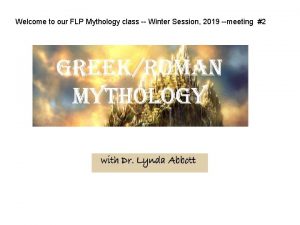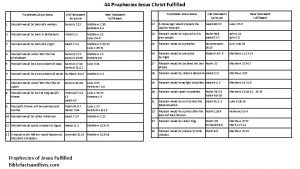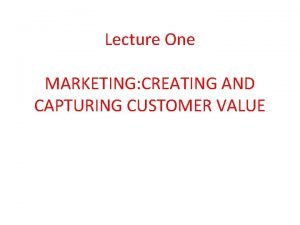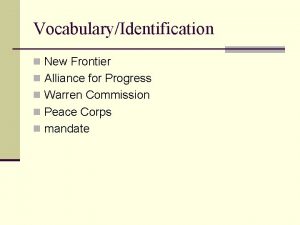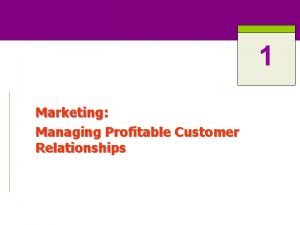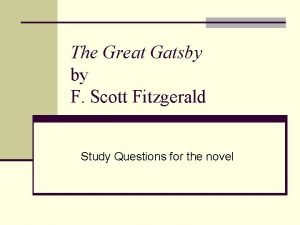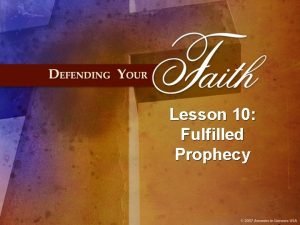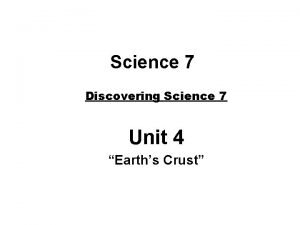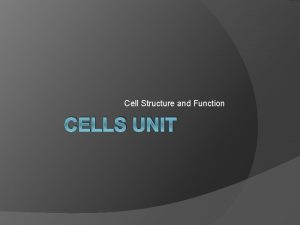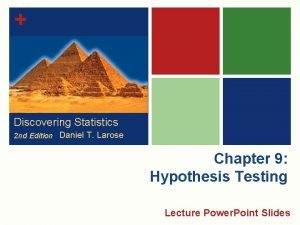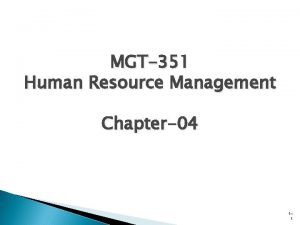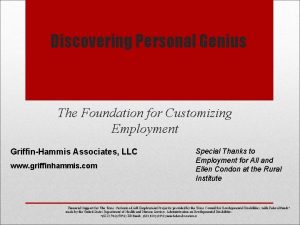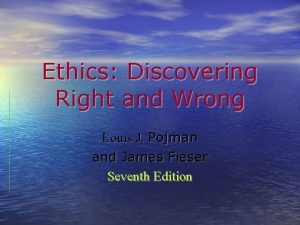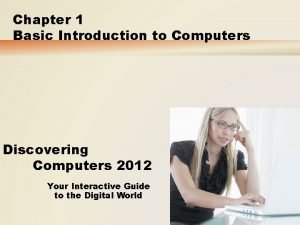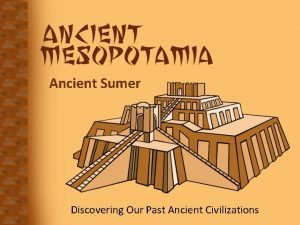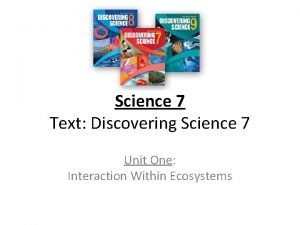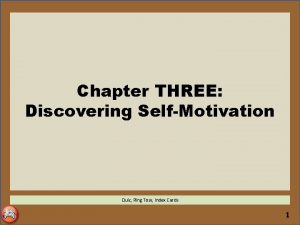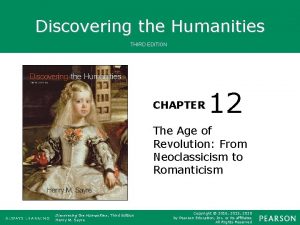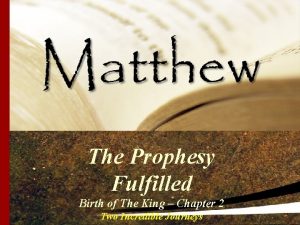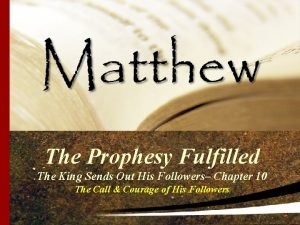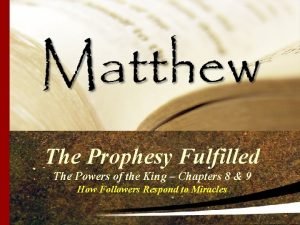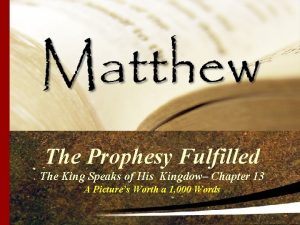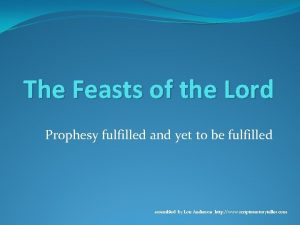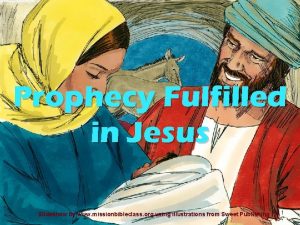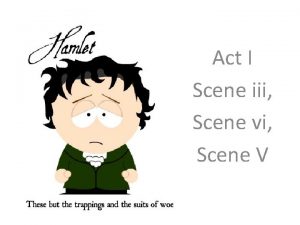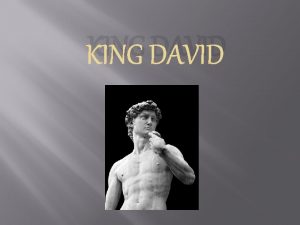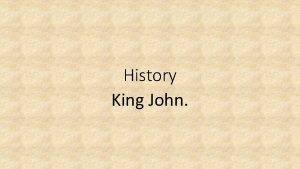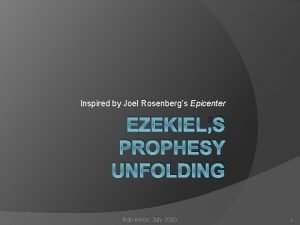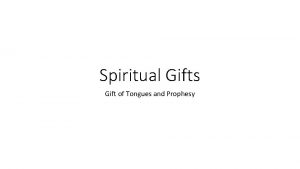The Prophesy Fulfilled Discovering The King THE SCENE





















- Slides: 21

The Prophesy Fulfilled Discovering The King

THE SCENE… The stage is set for a succession to a throne. Any time there is a shift in power, there’s the real prospect of danger and uncertainty, especially in Palestine. Rome wants to maintain control through force, persecution and threat of crucifixion. The Jews want deliverance from their oppressors. Some will collaborate and strive to oblige and obey, while some will kill to accomplish it. A man in his 30’s steps forward to be Israel’s own Messiah. The reaction is mixed, from hostile to joyful; from fear to jubilant expectation. But in any case, the nation sits up and takes notice. He must prove his credentials. He must confirm that he is the new “king”. WHO WANT’S AN IMPOSTER!

WHAT WOULD YOU DO? If you were to announce your rightful place to a kingly throne, what might be your approach? What might be your barriers? What might be your fears?

Can you identify this? This image is from a very famous painting. Can you identify the painting? Georges Pierre Seurat A Sunday Afternoon on the Island of La Grande Jatte

THE BIG PICTURE Step back and examine the Book of Matthew from afar and then move in for a more intimate look…like a jig saw puzzle, breaking it down into smaller pieces and then reassembling it so we can enjoy the personal adventure of applying it to our own lives… Who, What, When, & Where • Emphases • Overall Themes • Why (purposes) •

WHO is Matthew? • One of the original 12 apostles called by Jesus • A Palestinian Jew • Birth name: “Levi” – changed by Jesus to Matthew (“Gift of Yahweh”) • A tax collector for the Roman governor (literate & good record keeper) • Son of Alphaeus (Mark 2: 14) • Hometown: Capernaum, a fishing village on the northern shower of the Sea of Galilee • Died a martyr’s death in Ethiopia (by the sword) around 60 AD

WHAT about Matthew? • Publican (Tax Collector) • Since Israel was under Roman rule, and part of a province of the Roman Empire, taxes were imposed upon the inhabitants for building roads, paying the occupying army, financing the Roman governor, etc. • They were known to be extortioners of large sums of money. • Because tax collectors were in relationship with Rome, who were Gentiles in the eyes of the Jews, and hated for their domination, they were treated similar to the worst kinds of sinners and prostitutes. • They were excluded from all religious fellowship including the Temple and Synagogue.

WHEN did Matthew live? • Matthew wrote the Gospel after Christ's resurrection (AD 30) before the destruction of the temple (AD 70) • Believed to have been written between AD 37 and AD 60 • First written in Aramaic, later translated into Greek around AD 60 • Believed to have been 2 nd Gospel written (Mark being 1 st) • Written in Palestine (region of revolt) • A time of civil unrest, persecution of Jews by the Romans, arrests, floggings, and crucifixions • Cesar Augustus was Emperor in Rome • Herod the Great was the Roman Procurator of Judea at Jesus’ birth (32 -4 BC), Antipas governed Galilee (4 BC-AD 39), Pontius Pilate governed Judea (AD 26 -36).

RELIABILITY OF SCRIPTURE • Bibliographic Test: examination of textual transmission by which the documents reached us • How reliable are the copies in regard to the # of manuscripts and what is the time interval between the original (autograph) and the extant copies (manuscripts) Historical Documents # Manuscripts Time Span Demosthenes, Plato, Sophocles, Caesar, Tacitus, Aristotle, Euripides Total 444 Average 63 Average 1, 142 years New Testament Documents Total > 25, 000 Between 50 & 225 years “On the basis of manuscript tradition alone, the works of the New Testament were the most frequently copied and widely circulated books of antiquity”

EMPHASES • The coming “Kingdom” (“Kingdom of Heaven appears 33 times, “Kingdom of God” appears 4 times • Jesus is identifies as the “Son of David” 9 times • Jerusalem is called the “Holy City” and the City of the Great King” • 1 st century Jews emphasized “righteousness”, Matthew uses the terms “righteous” and “righteousness” more than Mark, Luke and John combined. • Matthew discusses the Law, ceremonial cleanness, the Sabbath, the Temple, David, the Messiah, Moses and the fulfillment of Old Testament prophesies all from a Jewsih perspective. • The Book of Matthew contains 53 Old Testament quotes and 76 Old Testament references. • The genealogy of Christ is recognizably Jewish, tracing the lineage from Abraham, the father of the Jews, through David.

EMPHASES • Jesus is the first name in the first verse of the Book of Matthew and the last name of the last verse in the Book of Revelation. • Matthew 1: 1 “Jesus” – ‘The Lord Saves’; “Christ” – ‘the Messiah’. Matthew 1: 22 b “Immanuel” – ‘God With Us’ • 13 times the Book emphasizes that Jesus’ actions were a direct fulfillment of prophesies v. Matthew 1: 22 a “All this happened to fulfill the Lord’s message through His prophets…” v. Matthew 2: 14 b “This fulfilled what the Lord had spoken through the prophet” v. Matthew 2: 23 b “This fulfillment what was spoken by the prophets concerning the Messiah…”

KEYS – KEY WORD • JESUS THE KING • A Jewish eye-witness writes to a Jewish audience to show them that the King of the Jews has come • Matthew validates Christ’s claim that He is, in fact, the prophesized Messiah of Israel • Everything about him is unique from his birthplace, His flight into Egypt, His announcement by John, His battle with Satan in the wilderness, etc. • Jesus is the culmination of promises delivered by the prophets over a period of a thousand years (even after 400 years of prophetic silence) “For a child will be born to us, a son will be given to us; And the government will rest on His shoulders; And His name will be called Wonderful Counselor, Mighty God, Eternal Father, Prince of Peace. “ Isaiah 9: 6

PURPOSES • Present a biography of Jesus • Prove to the Jewish reader that Jesus is the Messiah • Prove Jesus' legitimate authority by highlighting His divine relationship to God, the Father, His wise teaching, and His righteous life • Outline the characteristics of the “Kingdom of God” • Matthew is the only Gospel writer who speaks directly to the Church (Matt. 16: 18; 18: 17) and includes the Gentiles as recipients of God’s blessings (Matt. 24: 14; 28: 19) And I tell you that you are Peter, and on this rock I will build my church, and the gates of Hades will not overcome it. And this gospel of the kingdom will be preached in the whole world as a testimony to all nations, and then the end will come. If they still refuse to listen, tell it to the church; and if they refuse to listen even to the church, Therefore go and make disciples of all nations, baptizing them in treat them as you would a pagan or a tax the name of the Father and of the Son and of the Holy Spirit, collector.

PURPOSES • Instruct and disciple the Church via 5 discourses of Jesus • Sermon on the Mount (Matt. 5: 1 -7: 28) • Sermon sending out the 12 Apostles (Matt. 10: 511: 1) • Sermon to the multitudes from the boat (Matt. 13: 353) • Sermon on humility (Matt. 18: 2 -19: 1) • Sermon on future events (Olivet Discourse) (Matt. 24: 4 -26: 1)

KEYS – KEY VERSES MATTHEW 16: 16 -19 (NIV) “Simon Peter answered, “You are the Messiah, the Son of the living God. Jesus replied, “Blessed are you, Simon son of Jonah, for this was not revealed to you by flesh and blood, but by my Father in heaven. And I tell you that you are Peter, and on this rock I will build my church, and the gates of Hades will not overcome it. I will give you the keys of the kingdom of heaven; whatever you bind on earth will be bound in heaven, and whatever you loose on earth will be loosed in heaven. ”

KEYS – KEY VERSES MATTHEW 28: 18 -20 (NIV) Then Jesus came to them and said, “All authority in heaven and on earth has been given to me. Therefore go and make disciples of all nations, baptizing them in the name of the Father and of the Son and of the Holy Spirit, and teaching them to obey everything I have commanded you. And surely I am with you always, to the very end of the age. ”

KEYS – KEY CHAPTER MATTHEW 12 The turning point of Matthew comes when the Pharisees, acting as the leadership of the nation of Israel, formally reject Jesus Christ as Messiah, saying that His power comes not from God but from Satan. Christ’s ministry changes immediately with His new teaching of parables, increased attention given to His disciples, and His repeated statement that His death is now near.

SYMBOLS OF MATTHEW • Christian tradition has long connected the authors of the four canonical Gospels (Matthew, Mark, Luke, John) with the four "living creatures" that surround God's throne, as described in Rev 4: 7. • Moreover, early Christian writers connected the four evangelists with the four living creatures (St. Irenaeus of Lyons, St. Augustine of Hippo, Pseudo-Athanasius, and St. Jerome). • Matthew the Evangelist, the author of the first gospel account is symbolized by a winged man, or angel. Matthew's gospel starts with Jesus' genealogy from Abraham; it represents Jesus' Incarnation, and so Christ's human nature. This signifies that Christians should use their reason for salvation.

SYMBOLS OF MATTHEW "St Matthew and the Angel" by Caravaggio Miniature from the “Grandes Heures of Anne of Brittany” "Inspiration of St Matthew" by Caravaggio

SYMBOLS OF MATTHEW The Feast of St. Matthew is September 21 st. The symbols of St. Matthew are the sword, the means of his martyrdom, and the money bags, for his work as a tax collector. The portrayal of these symbols in groups of three suggests the Holy Trinity: Father, Son and Holy Spirit. The color green has traditionally signified everlasting, the triumph of life over death and hope.

OUR JOURNEY • The VISUAL BIBLE: The Book of Matthew This powerful and entertaining film is taken word for word from the text of the New International Version translation. Filmed on location in Tunisia, Morocco and South Africa, Matthew features a cast of thousands, historically accurate costuming, and award winning directing.
 Explain how the oracle given to king acrisius is fulfilled
Explain how the oracle given to king acrisius is fulfilled 44 prophecies jesus christ fulfilled
44 prophecies jesus christ fulfilled Customer needs and wants are fulfilled through
Customer needs and wants are fulfilled through Frontiern
Frontiern Is managing profitable customer relationship
Is managing profitable customer relationship Why does george wilson lock myrtle in the bedroom
Why does george wilson lock myrtle in the bedroom Messianic prophecies fulfilled in the infancy narratives
Messianic prophecies fulfilled in the infancy narratives Discovering science 7
Discovering science 7 Discovering computers 2016
Discovering computers 2016 Discovering cells
Discovering cells Teachers discovering computers
Teachers discovering computers Discovering computers 2011
Discovering computers 2011 P test in statistics
P test in statistics Participant diary/logs
Participant diary/logs Discovering personal genius
Discovering personal genius Ethics discovering right and wrong
Ethics discovering right and wrong Muhamed computer technology
Muhamed computer technology Discovering computers
Discovering computers Discovering our past ancient civilizations
Discovering our past ancient civilizations Pioneer species
Pioneer species Chapter 3 discovering self motivation quiz
Chapter 3 discovering self motivation quiz Monk by the sea analysis
Monk by the sea analysis
